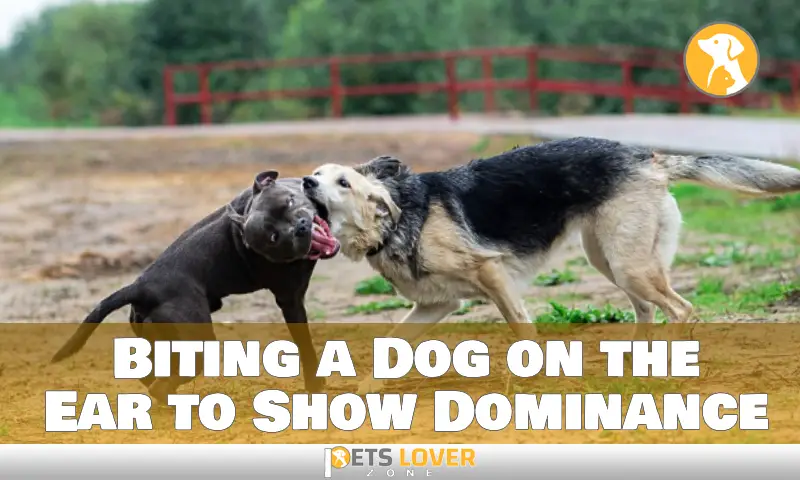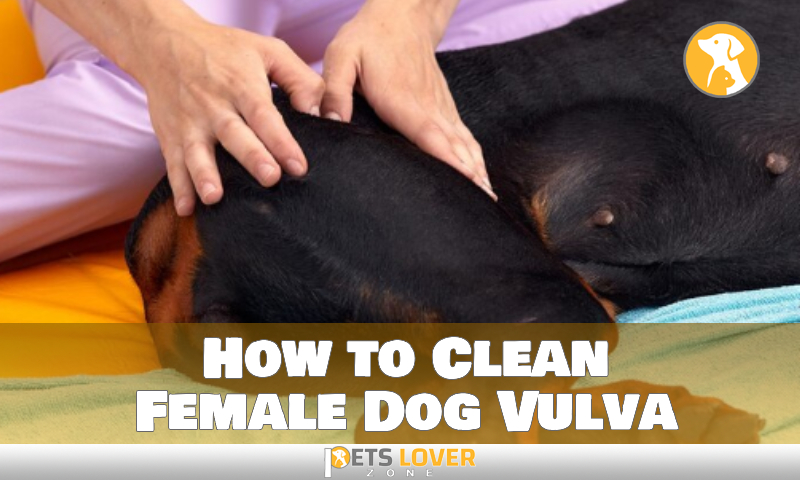To stop a dog from biting other dogs’ necks, implement consistent training and socialization practices. Properly socializing and training your dog is essential to ensuring their interactions with other dogs are safe and friendly.
While some dogs may naturally exhibit neck-biting behaviors during play, it is important to intervene and redirect this behavior to prevent any harm or discomfort to all dogs involved. By implementing consistent training methods, you can effectively stop your dog from biting other dogs’ necks.
This article will provide you with tips and techniques to address this behavior, ensuring a positive and peaceful interaction between your dog and other dogs.
Dogs’ Natural Instinct To Bite Other Dogs’ Necks
Dogs naturally communicate through body language, and one way they do so is by biting each other’s necks. This behavior can be seen as a display of dominance or a playful interaction between dogs. However, aggressive neck biting can also occur for various reasons.
It’s important for dog owners to intervene and prevent such behavior, as it can lead to injuries and conflicts. One effective way to address this issue is through proper training and socialization. Teaching your dog appropriate play behaviors and providing enough mental and physical stimulation can redirect their focus and discourage them from engaging in excessive biting.
Additionally, seeking the help of a professional dog trainer or behaviorist can provide further guidance and support in stopping this behavior. By understanding the reasons behind aggressive neck biting and implementing appropriate measures, dog owners can create a safe and harmonious environment for their pets.
Effects Of Dog Neck Biting On Other Dogs

Dog neck biting can have several effects on other dogs. The physical harm and discomfort that neck biting frequently results in are the first. This can result in wounds, scratches, and pain for the bitten dog. Secondly, emotional trauma and fear are common in dogs that have been bitten on the neck.
They may develop anxiety and become fearful of other dogs or certain situations. Lastly, there can be long-term impacts on behavioral patterns. Dogs who have been bit may act aggressively or defensively, especially when other dogs approach. It is essential to address this behavior to ensure the safety and well-being of all dogs involved.
Identifying The Triggers And Warning Signs
Dog biting is a concerning behavior, especially when it involves other dogs’ necks. Understanding the triggers and warning signs can help prevent such incidents. Common triggers for this behavior include fear, anxiety, and territorial instincts. It is essential to pay attention to observable warning signs, which may include aggressive body language like raised hackles or a tense posture.
Additionally, recognizing specific situations or environments that may provoke biting is crucial. If a dog feels threatened or cornered, they may resort to biting as a form of defense. To stop a dog from biting other dogs’ necks, owners should enforce proper socialization, provide positive reinforcement training, and seek professional help if necessary.
It is crucial to address this behavior immediately to ensure a safe and harmonious environment for all dogs involved.
Positive Reinforcement Training

Positive reinforcement training can be an effective way to stop a dog from biting other dogs’ necks. By providing rewards for good behavior, such as treats or praise, you can encourage alternative behaviors. Redirecting your dog’s attention with appropriate commands, such as “sit” or “leave it,” can also help prevent neck biting.
Consistency and patience are key in training sessions, as it may take time for your dog to learn and adopt new behaviors. Remember to always reward and praise your dog when it displays the desired behavior, reinforcing its understanding of what is expected.
With time and dedication, positive reinforcement training can effectively stop your dog from biting other dogs’ necks and promote more peaceful interactions.
Socialization And Exposure Training
Socialization and exposure training play a crucial role in stopping dogs from biting other dogs’ necks. Controlled introductions to other dogs help them learn appropriate behaviors. Gradual exposure to various social settings enables dogs to adapt to different environments. Working with professional trainers for socialization provides expert guidance and ensures safety during interactions.
These training methods aid in developing positive social skills and reducing the likelihood of aggressive behavior. Through consistent practice and reinforcement, dogs can become well-adjusted and respectful members of the canine community. By introducing dogs to a range of social experiences, they become more comfortable and less likely to engage in harmful behaviors.
Proper socialization is key to preventing neck-biting incidents and promoting harmonious interactions among dogs.
Behavior Modification Techniques
Behavior modification techniques can help stop dogs from biting other dogs’ necks. Counterconditioning is one effective method that can change negative associations. By desensitizing dogs to other dogs’ presence, their reactivity can be reduced. Implementing calming signals and stress reduction techniques also plays a crucial role in preventing biting incidents.
Using Muzzles And Safety Equipment
When it comes to preventing your dog from biting other dogs’ necks, using a muzzle and safety equipment is essential. The first step is choosing the right muzzle type for maximum effectiveness. Ensure a proper fitting and provide training for your dog with the muzzle.
Muzzles can be beneficial and necessary in certain situations where aggression or potential harm may occur. By using a muzzle, you can ensure the safety of your dog and other dogs around them.
Leash Handling And Control Techniques
Leash handling and control techniques are essential in preventing neck-biting incidents between dogs. To ensure proper management, it is recommended to use appropriate tools like martingale collars or harnesses. These tools provide better control and limit the dog’s ability to lunge or bite.
Additionally, reinforcing leash manners and commands helps establish obedience and control while on walks. Consistent training is key to preventing aggressive behaviors and promoting peaceful interactions between dogs. By maintaining control of the leash and teaching leash etiquette, you can create a safe and harmonious environment for your dog and other dogs they encounter.
Remember, responsible pet ownership includes being proactive in preventing potential biting incidents.
Avoiding Triggers And High-Stress Environments
Creating a safe and structured environment is essential to preventing a dog from biting other dogs’ necks. It is important to identify and avoid situations that may trigger this behavior. Understanding the dog’s triggers and avoiding high-stress environments can help prevent incidents.
Seek professional help or consult behaviorists if necessary to address any underlying issues and obtain professional guidance. By following these steps and implementing the right strategies, it is possible to stop a dog from biting other dogs’ necks and promote a safe and harmonious environment for all.
Monitoring Progress And Seeking Professional Help
Monitoring the dog’s behavior and progress is essential to stopping them from biting other dogs’ necks. Regular evaluation helps identify signs of improvement or regression. Seeking guidance from professional dog trainers or behaviorists is crucial for effective training. They can provide expert advice and techniques to address the bite issue.
Professional help ensures that the dog receives the necessary training and guidance to modify their behavior. By closely monitoring their progress and seeking professional assistance, dog owners can effectively prevent their pets from engaging in aggressive behavior toward other dogs.
This approach promotes a safer and more harmonious environment for all the dogs involved.
FAQ
How Do I Get My Dog To Stop Biting My Other Dog?
To stop your dog from biting another dog, use positive reinforcement training. Reward good behavior, redirect aggression, and seek professional help if needed.
Why Do Dogs Bite Each Other’s Collars?
Dogs bite each other’s collars to establish dominance or initiate play. It’s a natural behavior for them.
Why Do Dogs Bite Each Other’s Faces When Playing?
Dogs bite each other’s faces when playing to establish dominance and communicate during playtime.
Conclusion
Stopping a dog from biting other dogs’ necks requires a combination of understanding their behavior, proper training, and consistent reinforcement. By identifying the underlying reasons behind the biting, such as dominance or fear, owners can tailor their approach accordingly. Implementing positive reinforcement techniques, such as reward-based training and redirection, can help redirect the dog’s focus and discourage biting.
Additionally, providing opportunities for positive socialization with other dogs can help improve their behavior. It is essential to create a safe and controlled environment where dogs can gradually and positively interact. Consistency and patience are key to successfully addressing this issue, as it may take time for the dog to unlearn and replace the biting behavior with appropriate alternatives.
By being aware of the dog’s needs and providing appropriate training and socialization, owners can effectively stop their dogs from biting other dogs’ necks, leading to safer and more enjoyable interactions for both dogs and their owners.






